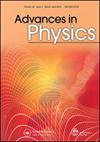量子气体腔QED:多体物理学的新范式
IF 13.8
1区 物理与天体物理
Q1 PHYSICS, CONDENSED MATTER
引用次数: 138
摘要
本文综述了量子气腔QED的最新进展和研究现状。自从第一次在由Bose–Einstein凝聚体与高Q光学腔的量子化电磁模式耦合的系统中实验证明原子自有序以来,该领域在过去十年中迅速发展。复合量子气腔系统提供了实现、模拟和实验测试基本固态哈密顿量的机会,以及实现传统凝聚态场景之外的非平衡多体现象的机会。这取决于在开放量子环境中使用定制的泵浦激光器和动态腔场设计和控制原子的光子诱导可调谐范围相互作用势的独特可能性。值得注意的例子包括具有长程相互作用的Hubbard类模型,该模型表现出晶格超固相、超出射磁有序和准晶对称性,以及动态规范势和非平衡拓扑相的出现。实验已经成功地将自旋极化和有自旋的量子气体加载到各种腔几何结构中,并设计了多功能的可调范围原子相互作用。这导致了自发离散和连续对称性破缺的实验观察,出现了软模以及超固体、密度和自旋自有序、动态自旋轨道耦合和非平衡动态自有序相等。此外,量子气腔设置为量子增强测量提供了新的平台。在这篇综述中,从基本模型的介绍开始,我们从教育学的角度总结了广泛的理论发展,并将其与当前和不久的将来的艺术实验相结合。本文章由计算机程序翻译,如有差异,请以英文原文为准。
Cavity QED with quantum gases: new paradigms in many-body physics
We review the recent developments and the current status in the field of quantum-gas cavity QED. Since the first experimental demonstration of atomic self-ordering in a system composed of a Bose–Einstein condensate coupled to a quantized electromagnetic mode of a high-Q optical cavity, the field has rapidly evolved over the past decade. The composite quantum-gas-cavity systems offer the opportunity to implement, simulate, and experimentally test fundamental solid-state Hamiltonians, as well as to realize non-equilibrium many-body phenomena beyond conventional condensed-matter scenarios. This hinges on the unique possibility to design and control in open quantum environments photon-induced tunable-range interaction potentials for the atoms using tailored pump lasers and dynamic cavity fields. Notable examples range from Hubbard-like models with long-range interactions exhibiting a lattice-supersolid phase, over emergent magnetic orderings and quasicrystalline symmetries, to the appearance of dynamic gauge potentials and non-equilibrium topological phases. Experiments have managed to load spin-polarized as well as spinful quantum gases into various cavity geometries and engineer versatile tunable-range atomic interactions. This led to the experimental observation of spontaneous discrete and continuous symmetry breaking with the appearance of soft-modes as well as supersolidity, density and spin self-ordering, dynamic spin-orbit coupling, and non-equilibrium dynamical self-ordered phases among others. In addition, quantum-gas-cavity setups offer new platforms for quantum-enhanced measurements. In this review, starting from an introduction to basic models, we pedagogically summarize a broad range of theoretical developments and put them in perspective with the current and near future state-of-art experiments.
求助全文
通过发布文献求助,成功后即可免费获取论文全文。
去求助
来源期刊

Advances in Physics
物理-物理:凝聚态物理
CiteScore
67.60
自引率
0.00%
发文量
1
期刊介绍:
Advances in Physics publishes authoritative critical reviews by experts on topics of interest and importance to condensed matter physicists. It is intended for motivated readers with a basic knowledge of the journal’s field and aims to draw out the salient points of a reviewed subject from the perspective of the author. The journal''s scope includes condensed matter physics and statistical mechanics: broadly defined to include the overlap with quantum information, cold atoms, soft matter physics and biophysics. Readership: Physicists, materials scientists and physical chemists in universities, industry and research institutes.
 求助内容:
求助内容: 应助结果提醒方式:
应助结果提醒方式:


